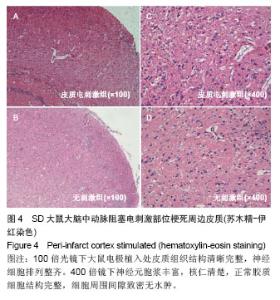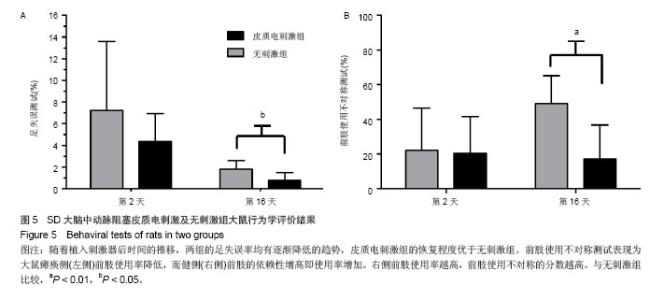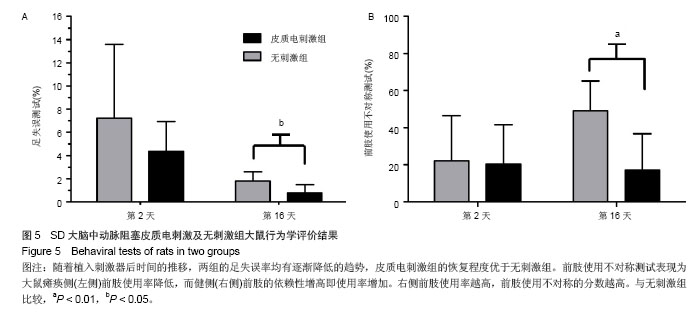| [1]Harvey RL,Stinear JW.Cortical stimulation as an adjuvant to upper limb rehabilitation after stroke. PM R. 2010; 2 (12 Suppl 2):269-278.
[2]Hummel F, Celnik P, Pascual-Leone A,et al.Controversy: Noninvasive and invasive cortical stimulation show efficacy in treating stroke patients.Brain Stimulation.2008;1:370-382.
[3]Peterchev AV, Wagner TA, Miranda PC,et al.Fundamentals of Transcranial Electric and Magnetic Stimulation Dose: Definition, Selection, and Reporting Practices. Brain Stimul. 2012;5(4):435-453.
[4]Brunoni AR, Nitsche MA, Bolognini N, et al. Clinical research with transcranial direct current stimulation (tDCS): challenges and future directions. Brain Stimul.2012;5(3):175-195.
[5]Li Q, Qian ZM, Arbuthnott GW, et al. Cortical effects of deep brain stimulation: implications for pathogenesis and treatment of Parkinson disease. JAMA Neurol. 2014;71(1):100-103.
[6]Brown JA, Lutsep H, Cramer SC,et al. Motor cortex stimulation for enhancement of recovery after stroke: Case report.Neurol Res.2003;25:815-818.
[7]Brown JA, Lutsep HL, Weinand M,et al. Motor cortex stimulation for the enhancement of recovery from stroke: A prospective, multicenter safety study. Neurosurgery.2006; 58:464-473.
[8]Huang M, Harvey RL, Stoykov ME,et al.Cortical stimulation for upper limb recovery following ischemic stroke: A small phase ii pilot study of a fully implanted stimulator. Top Stroke Rehabil. 2008;15:160-172.
[9]Kim HI, Shin YI, Moon SK,et al. Unipolar and continuous cortical stimulation to enhance motor and language deficit in patients with chronic stroke: Report of 2 cases. Surg Neurol. 2008;69:77-80.
[10]Levy R, Ruland S, Weinand M,et al.Cortical stimulation for the rehabilitation of patients with hemiparetic stroke: A multicenter feasibility study of safety and efficacy.J Neurosurg.2008; 108: 707-714.
[11]Koesler IB, Dafotakis M,Ameli M,et al.Electrical somatosensory stimulation improves movement kinematics of the affected hand following stroke. J Neurol Neurosurg Psychiatry.2009;80(6): 614-619.
[12]Adkins-Muir DL, Jones TA. Cortical electrical stimulation combined with rehabilitative training: Enhanced functional recovery and dendritic plasticity following focal cortical ischemia in rats. Neurol Res.2003;25:780-788.
[13]Kleim JA, Bruneau R, VandenBerg P, et al. Motor cortex stimulation enhances motor recovery and reduces peri-infarct dysfunction following ischemic insult. Neurol Res.2003; 25: 789-793.
[14]Plautz EJ, Barbay S, Frost SB, et al. Post-infarct cortical plasticity and behavioral recovery using concurrent cortical stimulation and rehabilitative training: A feasibility study in primates.Neurol Res.2003;25:801-810.
[15]Teskey GC, Flynn C, Goertzen CD,et al.Cortical stimulation improves skilled forelimb use following a focal ischemic infarct in the rat. Neurol Res.2003;25:794-800.
[16]Adkins DL, Campos P, Quach D,et al. Epidural cortical stimulation enhances motor function after sensorimotor cortical infarcts in rats. Exp Neurol.2006;200:356-370.
[17]Adkins DL, Hsu JE, Jones TA.Motor cortical stimulation promotes synaptic plasticity and behavioral improvements following sensorimotor cortex lesions. Exp Neurol.2008; 212: 14-28.
[18]Nouri S, Cramer SC. Anatomy and physiology predict response to motor cortex stimulation after stroke. Neurology. 2011;77(11):1076-1083.
[19]Moon SK, Shin YI, Kim HI, et al.Effect of prolonged cortical stimulation differs with size of infarct after sensorimotor cortical lesions in rats. Neurosci Lett.2009;460(2):152-155.
[20]Baba T, Kameda M, Yasuhara T, et al. Electrical stimulation of the cerebral cortex exerts antiapoptotic, angiogenic, and anti-inflammatory effects in ischemic stroke rats through phosphoinositide 3-kinase/Akt signaling pathway. Stroke.2009; 40(11):e598-605.
[21]Cogan SF. Neural stimulation and recording electrodes. Annu Rev Biomed Eng. 2008;10:275-309.
[22]Winter JO, Cogan SF, Rizzo JF, 3rd. Retinal prostheses: Current challenges and future outlook. J Biomater Sci Polym Ed. 2007;18(8):1031-1055.
[23]Longa EZ, Weinstein PR, Carlson S,et al. Reversible middle cerebral artery occlusion without craniectomy in rats. Stroke. 1989;20:84-91.
[24]张乾,毛善平,李涛,等.构建大脑中动脉阻塞脑缺血模型大鼠的类型分析[J].中国组织工程研究与临床康复,2011,15(24):4391- 4394.
[25]Wegener S, Weber R, Ramos-Cabrer P, et al. Subcortical lesions after transient thread occlusion in the rat: T2-weighted magnetic resonance imaging findings without corresponding sensorimotor deficits.J Magn Reson Imaging.2005;21: 340-346.
[26]Schaar KL, Brenneman MM, Savitz SI. Functional assessments in the rodent stroke model.Exp Transl Stroke Med.2010;2(1):13.
[27]Cheng X, Li T, Zhou H, Zhang Q, et al. Cortical electrical stimulation with varied low frequencies promotes functional recovery and brain remodeling in a rat model of ischemia. Brain Res Bull. 2012;89(3-4):124-132. |



